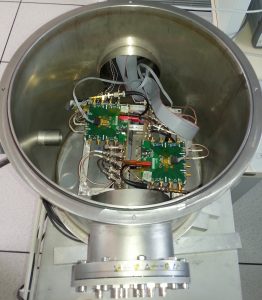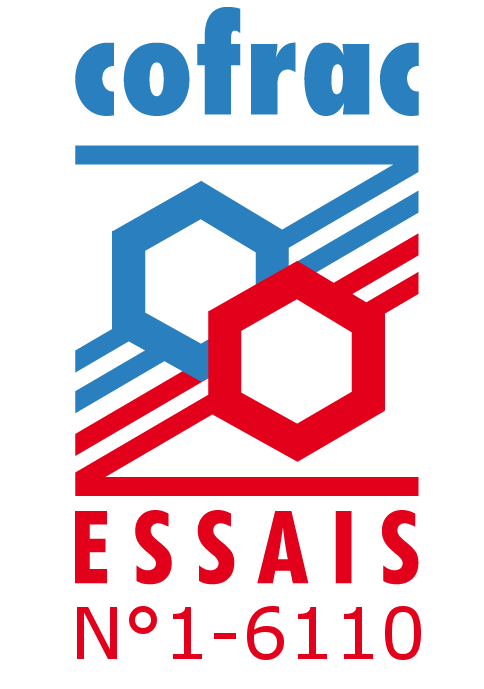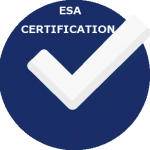Our irradiation means
- GAMRAY – Gamma (Co60) radiation laboratory / ISO 17025

- Pulsed laser
- VASCO –Californium (Cf252) source
- UV mean, Thermal cycling, solar protons,
- SWIPI – Solar protons simulator
- VEISPA – Radiation belts electron generator
GAMRAY – Gamma (Co60) radiation laboratory / ISO 17025
Our irradiation system GAMRAY is a Coblat-60 source (Gamma radiation with two main lines at 1.17 and 1.33 MeV).
- Dose rate from 7 rad(Si)/h to 4 krad(Si)/h.
- The chamber temperature is controlled 20°C (±2°)
- The useful irradiation volume is : 45 m3

In 2017, we performed an interlaboratory comparison with the ESA-ESTEC irradiation facility. This study demonstrated the validity of our dosimetry measurement capabilities – Download the full report
Pulsed laser
Our pulsed YAG laser, installed in 2014, has the following technical characteristics:
- Wavelength: 1,064 nm
- Pulses’s duration 400 ps
- Energy: 100 pJ / pulse at 135 nJ / pulse
- Laser diameter: 1.8 μm (x100) up to 8 μm (x10)
- Camera resolution : 1280 x 1024 pixels
This means can simulated a heavy ion passage. In addition to the SEE campaigns, it allows to precisely define the sensitive areas and to carry out a mapping of the chip.

VASCO –Californium (Cf252) Source
This low-activity source (a few μCi) is used in a vacuum chamber equipped with the same connections as the accelerators used for heavy ion tests.
This is used to prepare SEE tests and notably, to optimize the time spent on accelerators at external facilities.

UV means
Our UV exposure means can be used to irradiate samples under vacuum in accordance with the ECSS-Q-ST-70-06C norm. The available exposure area is 6 x 6 cm. This test means accelerates the exposure time up to a factor of 15, while respecting the number of ESH (Equivalent Sun Hour).
Thermal cycling
We own several thermal cycling chambers, under vacuum and inert atmosphere, compliant with the ECSS-Q-ST-70-04C standard. The accessible temperature ranges are:
-under vacuum: -190 ° / + 190 ° C or -180 ° / + 200 ° C
-under inert atmosphere: -180 ° / + 400 ° C
All of our thermal cycling chambers enable to implement in-situ electrical measurements.
SWIPI – Solar Wind Proton Irradiator
We own a solar wind experimental simulator that exposes samples to low-energy protons (energy range from 300 eV to 5 keV) under vacuum. The exposure can be carried out at high or low temperatures, in the range of -180 ° / +200 ° C, with the possibility of in-situ electrical measurements.
VEISPA – Vacuum Electron Irradiation facility for Spatialization
Based on a LINAC-type accelerator, this test means can be used to irradiate samples under on electron beam of 1 to 4 MeV under vacuum. The available exposure area is 30 x 30 cm. The tests can be carried out at high or low temperatures, in the range -150 ° / + 200 ° C, with the possibility of in-situ electrical measurements.



